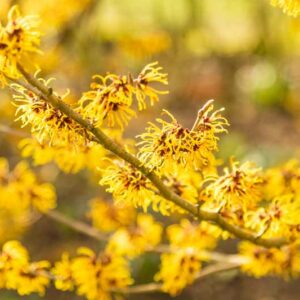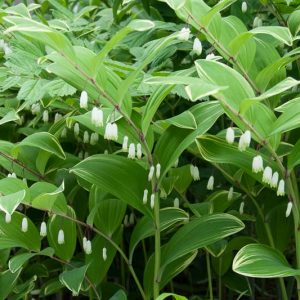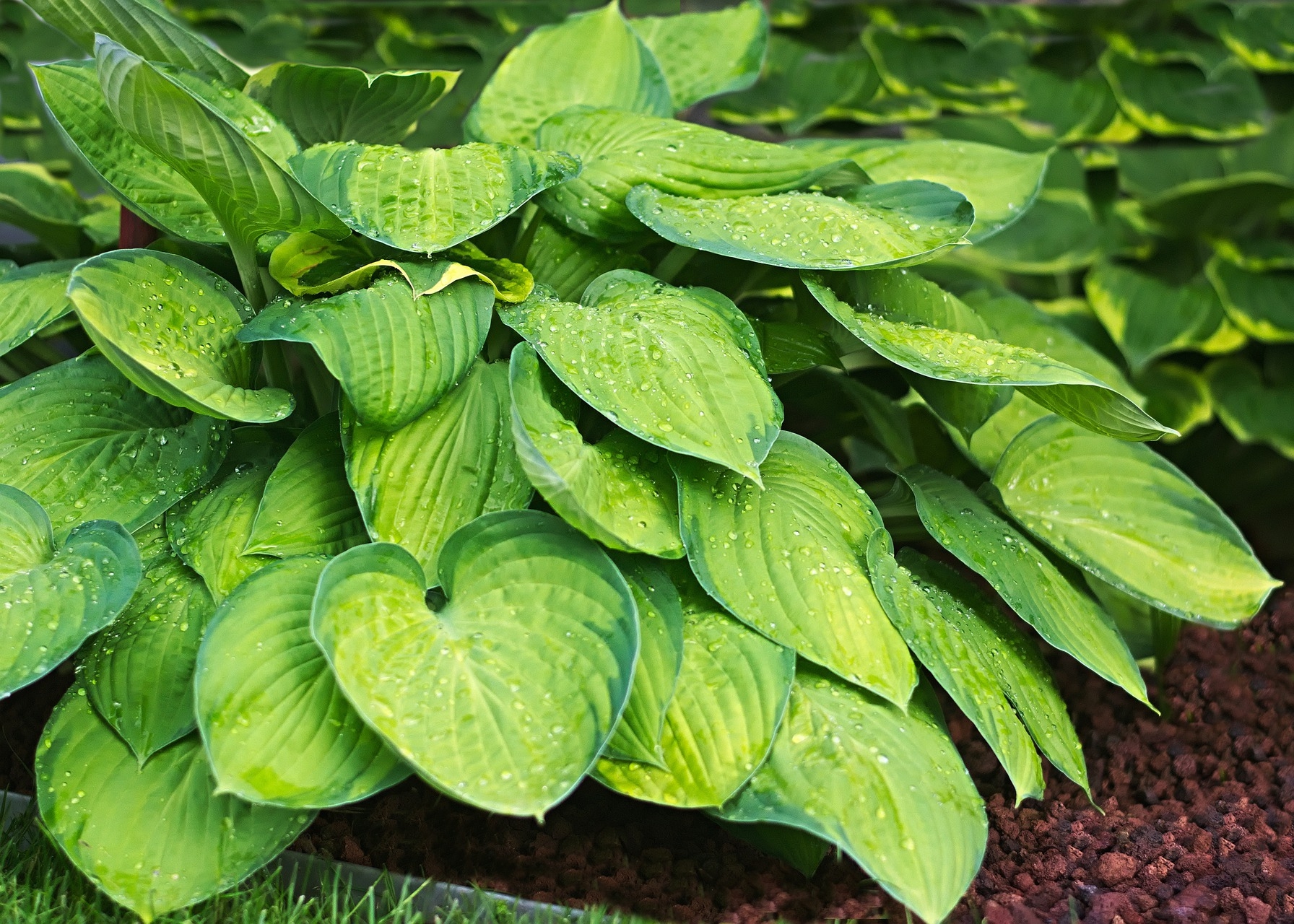Primarily grown for their beautiful foliage, hostas are long-lived, shade-loving perennials highly esteemed by gardeners. There are hundreds of cultivars of these easy-to-grow plants that come in a huge range of sizes, from very small to very large, and their leaves come in pretty shades of green, chartreuse, gold, dusky blue, or beautifully variegated.
Numerous flower bulbs, perennials, shrubs, and trees can be planted next to your hostas for added color and interest.
Hostas are a staple in many gardens thanks to their versatility and variety of foliage With over 45 species and thousands of cultivars, hostas offer diverse leaf shapes, sizes, and colors to fit any garden design Though hostas are beautiful on their own, interplanting complementary flowers, ferns, and shrubs can really make them shine. The right companion plants act like supporting actors that make the hosta lead really pop.
When choosing companion plants, consider bloom time height and color. Combine early spring bulbs with summer perennials and shrubs for ongoing interest. Filler plants help highlight hosta textures and myriad hues. Read on for suggestions to illuminated and enhance your hostas all season long.
Spring Companion Plants
Hostas emerge late, so spring bloomers pair nicely without competing for space.
Allium
Ornamental onion bulbs like Allium christophii offer rounded Pom Pom blooms on tall, slender stems. Purple spheres contrast nicely with hosta leaves. Alliums go dormant after bloom, allowing hostas to fill out. Other good options include A. giganteum, A.Gladiator, and A. zebdanense.
Bergenia
Also called pigsqueak, bergenia makes an excellent hosta companion with evergreen foliage and early spring blooms. Low growing types like B. cordifolia offer large, rounded leaves that maintain interest before hostas unfurl. Flowers come in white, pink, and red.
Cranesbill
Many hardy geraniums or cranesbill pair well with hostas. G. macrorrhizum interplants especially nicely. The shiny, fragrant, palmately lobed leaves complement hosta shapes. Light pink flowers bloom above in spring and may rebloom in fall.
Daffodil
What better flower for spring than cheerful daffodils? Plant trumpet, cupped, and split corona types near hostas. Cluster different varieties together for ongoing bloom. The flowers brighten shady spots before hosta leaves fill out. Plant bulbs in fall for spring blooms.
Hyacinth
Fragrant hyacinth bulbs offer dense, cone-shaped flower spikes in pinks, purples, blues, yellows, and white. They pop up early, allowing time for hosta leaves to unfurl after the hyacinth show. Plant in fall.
Muscari
Grape hyacinth offers easy to grow, spring charm. The small perennial produces dense clumps of leaves withTier grapes, on-Tall spikes of blue flowers. Tuck clumps near hostas for contrasting shapes and hues. Great Plant cultivars include ‘Valerie Finnis‘ and ‘Blue Spike’.
Spurge
Euphorbia polychroma, also called cushion spurge, blooms with yellow bracts in early spring. The flowers pop against emerging hostas, while the mounded form accents hosta textures. It combines well with red or blue hostas. Bonus: deer rarely bother spurge.
Solomon’s Seal
Arched stems with dangling white blooms give Solomon’s seal elegant appeal. Variegated types like P. polyanthus ‘Argenteomarginata’ add cream and white striped foliage. Plant near hostas for layered interest and sweet spring fragrance.
Trillium
Woodland wildflowers like Trillium grandiflorum brighten shady hosta gardens in spring. The three-petaled white flowers hover above a whorl of foliage. Blooms eventually fade to soft pink. Plant in drifts under trees and shrubs.
Tulips
Nothing says spring quite like tulips! Plant bulbs in fall for vibrant blooms come springbefore hostas fully emerge. Combine early, mid, and late blooming types for ongoing color. Favorites include hybrids like ‘Queen of Night’, species tulips, parrots, doubles, and more.
Summer Companion Plants
When temperatures warm up, keep the garden looking lush by pairing hostas with summer bloomers.
Astilbe
Flowers don’t come much fluffier than Astilbe. Feathery, colorful plumes reach 1-4 feet tall depending on variety. ‘Visions in Pink’ offers soft, dusty pink blooms. For red, try ‘Fanal’. Astilbe do best in partly shaded, evenly moist areas.
Begonia
For gorgeous color through summer and fall, plant begonias with hostas. Wax begonia and Dragon wing begonia offer vivid flowers and attractive leaf shapes to complement hostas. Grow them in pots to easily move around the garden.
Impatiens
Shade loving impatiens are an excellent choice to fill space after bulbs fade. The popular annual comes in a rainbow of colors like red, orange, white, pink, purple and more. Plant en masse or tuck individual plants around hostas.
Lady’s Mantle
Lady’s mantle (Alchemilla mollis) contributes frothy sprays of tiny yellow-green blooms in summer. Rounded, pleated foliage adds interesting shapes and textures to accent broad hosta leaves. It spreads nicely to fill in bare spots.
Wishbone Flower
Heat loving wishbone flower (Torenia) thrives with hostas in partly shaded sites. Vibrant blue, white, or pink trumpet shaped flowers bloom all summer. Compact types fit nicely along garden edges and between hostas. Great for containers, too.
Shrubs and Trees
Beyond perennials and annuals, shrubs and trees make excellent long term companions for hostas. They provide beneficial shade to keep hostas looking their best.
Japanese Maple
Graceful Japanese maples offer artistic appeal to woodland gardens. Lace-leaf types have finely dissected foliage that allows filtered light to shine on hostas. Plant small, slow growing varieties like Acer palmatum ‘Shishigashira’ where space is limited.
Azaleas and Rhododendrons
For seasonal color, plant hostas around azaleas and rhododendrons. Blooms in shades of pink, purple, red, white and orange appear before hostas reach full size. Established plants tolerate the same growing conditions as hostas.
Ferns
Mix fine textured ferns like Autumn Brilliance, Tassel Fern, and Lady Fern among hostas to mimic natural woodland settings. They share the same light, soil and moisture preferences. Try Christmas Fern and Japanese Painted Fern for winter interest.
Hellebores
Also called Lenten Rose, hellebores offer early spring blooms followed by leathery evergreen foliage. Plant shorter growing Helleborus orientalis near bold hostas for nice contrast. Foliage remains attractive when flowers fade.
Heuchera
Coral bells come in a huge range of leaf colors like green, red, bronze, purple, peach and rose. Their mounding habit fills space around upright hostas nicely. Look for varieties like ‘Caramel’, ‘Berry Smoothie’ and ‘Lime Rickey’.
Hydrangea
Hydrangeas produce lush flower heads that complement the bold foliage of hostas. Grow panicle hydrangea and smooth hydrangea for conical, cone-shaped blooms. For rounded flower heads, choose mophead, lacecap and oakleaf types.
Viburnum
Spring-flowering viburnum shrubs like V. plicatum f. tomentosum ‘Mariesii’ and V. carlesii add floral fragrance when hostas are just starting to emerge. Summer berries attract birds while fall foliage and form provide year-round interest.
Design Tips
Follow these simple principles to design a lush, colorful garden that highlights your hostas:
-
Use hostas as a foundation plant. Build flower beds and borders around them.
-
Mass several hostas together for greater impact rather than dotting them singly.
-
Use companion plants to frame and accent hostas. Taller plants can hide bare hosta stems.
-
Edge hosta groupings with low growers like sweet alyssum, violets, or Irish moss.
-
Select companions with contrasting or complementary leaf shapes, sizes, and colors.
-
Underplant hostas with spring bulbs and summer annuals. As hostas grow, they’ll hide fading foliage.
-
Set off blue and gold hostas with bright pink, red and purple flowers.
-
Use white blooming plants to light up shaded areas planted with darker foliage.
-
Vary heights and bloom times to keep the garden looking fresh all season.
With the right companion plants, hostas take center stage while supporting players enhance their allure. Follow this guide to design a stunning display that combines form, color and texture for maximum appeal. Mixing complementary perennials, shrubs, bulbs and annuals will let your hostas shine.
Discover These Helpful Guides for Further Reading
| Hardiness | 3 – 9 |
|---|---|
| Heat Zones | 1 – 8 |
| Climate Zones | 1, 1A, 1B, 2, 2A, 2B, 3, 3A, 3B, 4, 5, 6, 7, 8, 9, 10, 14, 15, 16, 17, 18, 19, 20, 21 |
| Plant Type | Perennials |
| Genus | Hosta |
| Exposure | Partial Sun, Shade |
| Season of Interest | Spring (Mid, Late) Summer (Early, Mid, Late) Fall |
| Maintenance | Low |
| Soil Drainage | Moist but Well-Drained |
| Landscaping Ideas | Patio And Containers, Small Gardens |
Here are a few rules to follow to create successful plant combinations.
- Hostas can be grown in USDA plant hardiness zones 3 through 9. They do best in fertile, moist, well-drained soil that gets some to full shade. So, the best plants to grow with a hosta are ones that do well in the same conditions.
- Do not plant your hosta near shagbark hickory (Carya ovata) and gum trees (Eucalyptus). These trees shed their bark, which can hurt hostas that are planted under them.
- Most hostas have a broadly mounded habit, with a dense mound of falling leaves. This makes them look great next to carpeting or strongly upright plants.
- When you put solid green hostas next to perennials like Japanese sedge (Carex oshimensis) or variegated Solomon’s seal (Polygonatum odoratum), the white, cream, or yellow leaf stripes will really stand out.
- Gold and yellow hostas look great with plants that have dark green or deep purple leaves, like black mondo grass (Ophiopogon planiscus) or carpet bugle (Ajuga).
- Hostas’ beautiful leaves are appealing to more than just people. Slugs and snails are the most troublesome pests to hostas. They feed on their leaves and leave conspicuous holes. They can kill young seedlings by completely eating them.
- Use plant associations to deter slugs. Some herbaceous plants are less likely to be eaten by slugs and snails because they don’t like the way they feel or the chemicals that are in them. It is possible to greatly reduce the amount of damage when hostas are mixed in with these plants.
| Hardiness | 3 – 9 |
|---|---|
| Heat Zones | 1 – 8 |
| Climate Zones | 1, 1A, 1B, 2, 2A, 2B, 3, 3A, 3B, 4, 5, 6, 7, 8, 9, 10, 14, 15, 16, 17, 18, 19, 20, 21 |
| Plant Type | Perennials |
| Genus | Hosta |
| Exposure | Partial Sun, Shade |
| Season of Interest | Spring (Mid, Late) Summer (Early, Mid, Late) Fall |
| Maintenance | Low |
| Soil Drainage | Moist but Well-Drained |
| Landscaping Ideas | Patio And Containers, Small Gardens |





Planting Some Gorgeous Hostas! // Garden Answer
FAQ
How many hostas should I plant together?
How to stop slugs from eating hostas?
What happens if you don’t cut back hostas?
Do hostas prefer sun or shade?
What are the best Hosta companion plants?
Hostas are reliable perennials with impressive foliage that thrive in shade gardens. There are many plants with similar growing needs that pair well with hostas. Here are suggestions for some of the best hosta companion plants to grow. 1. Astilbe (Astilbe) Showy plumes in colors of red, pink, purple or white bloom above lacy foliage in summer.
What plants can you grow with hostas?
You can grow several different perennial plants with your hostas, including astilbe, coral bells, bleeding hearts, lungwort, and Japanese painted ferns. Annual plants include impatiens and coleus. Knowing which other plants would add to the beauty of a garden containing hostas is just the beginning.
Are hostas perennials?
Hostas are hardy perennials with attractive foliage. They’re perfect for shady and long-lived gardens—some may even outlive the gardener! While hostas require little attention, we advise cutting back the plants by early winter to avoid pest damage. Learn all about hostas in our growing guide.
Can hostas grow in shady soil?
Hostas are shade-loving plants that grow best when planted in cool, moist soil in shady areas. They favor slightly acidic soil between pH 6.0 and 6.5. Their USDA hardiness zones are 3 to 8, which means any plants you wish to grow alongside your hosta should require similar conditions.

